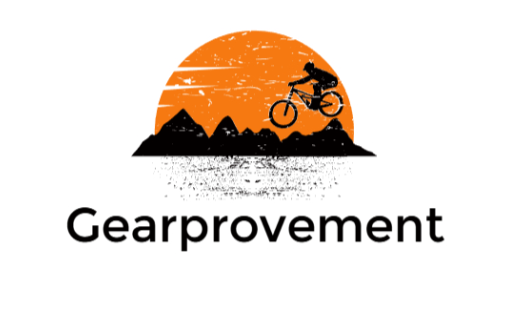Get ready to upgrade your riding experience with the ultimate protection and style – our top picks for motorcycle helmets will have you geared up for adventure!

Rev up your engines and hold on tight, because we're about to dive into the world of motorcycle helmets! When it comes to riding on two wheels, safety should always be your top priority, and the helmet you choose can make all the difference.
Whether you're a seasoned rider or just starting out on your motorcycling journey, selecting the right helmet is essential for protecting your head and ensuring a thrilling yet secure ride.
In this comprehensive post, we'll take you on a ride through the top motorcycle helmets available on the market today. From cutting-edge technology and innovative designs to comfort, style, and, most importantly, safety features, we've got you covered. So, gear up as we explore the ultimate headgear options that not only provide the highest level of protection but also enhance your riding experience.
Let's hit the road and discover the best helmets that combine style, safety, and performance!
Top 3 Motorcycle Helmets
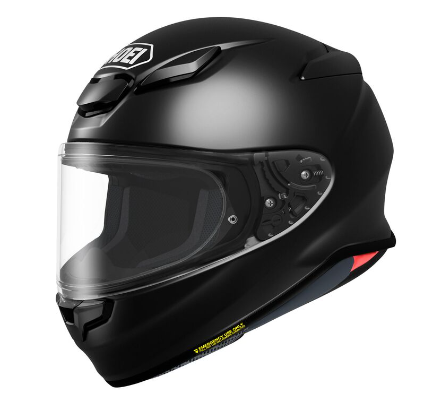
#1st Rated
The Shoei RF-1400
The Shoei RF-1400 is a premium full-face motorcycle helmet that is known for its superior safety, comfort, and performance. It is the latest iteration of Shoei's flagship RF series, and it incorporates a number of new features and improvements over its predecessor, the RF-1200.
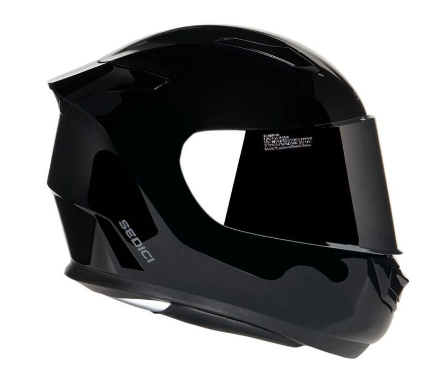
#2nd Rated
The Sedici Strada II Parlare Bluetooth Helmet
The Sedici Strada II Parlare Bluetooth Helmet is a full-face helmet that combines performance and protection with the convenience of Bluetooth technology. The helmet is made from a proprietary blend of fiberglass and aramid fiber, which provides a strong, lightweight shell that meets or exceeds DOT and ECE-22.05 safety standards. The helmet also features a dual-density EPS liner that helps to absorb impact and protect the rider's head in the event of a crash.
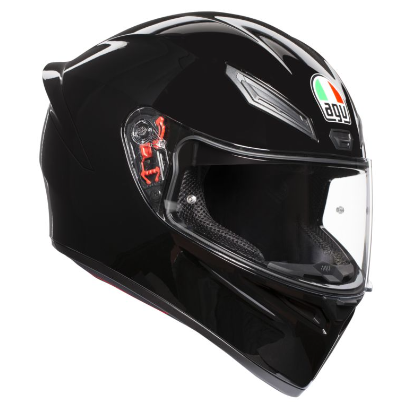
#3rd Rated
The AGV K1 S Helmet
The AGV K1 S Helmet is a full-face motorcycle helmet designed for everyday riding. It features an aerodynamic shape, racing-developed front air vents, and a wind-tunnel-tested spoiler to maximize performance and stability at high speeds. The anti-scratch visor is ready for Pinlock anti-fog lens inserts and allows for a wider vertical and lateral field of vision.
1) Shoei RF-1400 Helmet

The Shoei RF-1400 is a premium full-face motorcycle helmet that is known for its superior safety, comfort, and performance. It is the latest iteration of Shoei's flagship RF series, and it incorporates a number of new features and improvements over its predecessor, the RF-1200.
Safety Standards
The Shoei RF-1400 helmet has met and exceeded the following safety standards:
- DOT (Department of Transportation): This is the minimum safety standard for helmets sold in the United States.
- SNELL M2020d and M2020r: This is a more rigorous safety standard that is often required for racing helmets.
- ECE 22.06: This is a European safety standard that is widely accepted around the world.
- SHARP 4-star rating: This is a British safety rating system that gives the RF-1400 a 4-star rating, which is the highest possible rating.
These safety standards test helmets for a variety of impact scenarios, including frontal impacts, side impacts, and rear impacts. The RF-1400 has performed well in all of these tests, demonstrating its ability to protect riders in the event of a crash.
In addition to meeting these safety standards, the RF-1400 also features a number of other safety features, such as its AIM+ shell construction, dual-layer EPS liner, and emergency release system. These features make the RF-1400 one of the safest helmets on the market.
Helmet Type
The Shoei RF-1400 is a full-face motorcycle helmet. This type of helmet covers the entire head, including the face, chin, and back of the head. Full-face helmets offer the best possible protection in the event of a crash, and they are the most popular type of helmet among motorcycle riders.
Full-face helmets are typically heavier and more expensive than other types of helmets, but they offer the best possible protection. They are also the most versatile type of helmet, and can be used for a variety of riding disciplines, including street riding, sport riding, and touring.
The RF-1400 is a premium full-face helmet that is designed for riders who demand the best possible protection and performance. It is made with the highest quality materials and construction methods, and it meets and exceeds the most rigorous safety standards.
Fit and Comfort
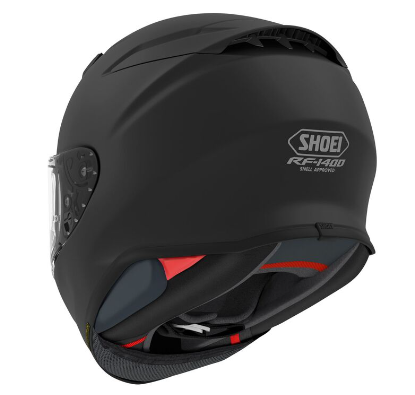
The Shoei RF-1400 helmet is known for its excellent fit and comfort. It has a fully removable and washable 3D Max-Dry Interior System II that is made from soft, breathable materials. The cheek pads are adjustable for a custom fit, and the helmet also features a ventilation system with six air intakes and four exhaust vents to keep the rider's head cool and dry.
Many riders report that the RF-1400 fits snugly but comfortably. It should not be too tight or too loose, and it should not cause any pressure points on the head or face. The cheek pads should fit snugly but not too tightly, and the helmet should not move around on the head when the rider shakes their head.
The RF-1400 is also a very quiet helmet. The snug fit and ventilation system help to reduce wind noise and turbulence. The helmet also comes with a chin curtain and breath guard that help to further reduce noise.
Overall, the Shoei RF-1400 is a very comfortable and quiet helmet. It is a good choice for riders who are looking for a helmet that will fit snugly and comfortably, even on long rides.
Ventilation
The Shoei RF-1400 helmet has a very effective ventilation system with six air intakes and four exhaust vents. The air intakes are located on the top, front, and chin of the helmet. The exhaust vents are located on the back and sides of the helmet.
The air intake vents can be opened and closed to control airflow. The chin vent is particularly effective at directing air into the helmet, which can be helpful on hot days.
The exhaust vents work to remove hot, moist air from the helmet. They are also designed to be aerodynamic, so they do not create drag or lift.
Overall, the ventilation system on the Shoei RF-1400 is very effective at keeping the rider's head cool and dry. It is one of the best ventilation systems on the market.
Padding And Liner
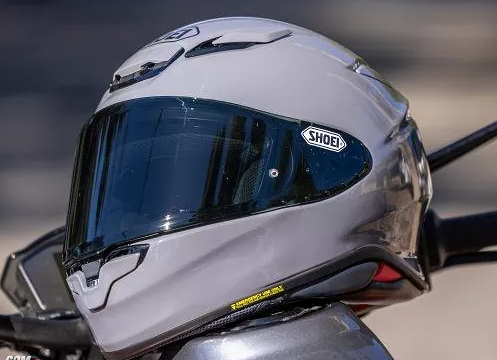
The Shoei RF-1400 helmet has a removable and washable 3D Max-Dry Interior System II. This liner is made from soft, breathable materials that are designed to wick away moisture and keep the rider's head cool and dry.
The liner is also hypoallergenic and antimicrobial, which helps to reduce the risk of irritation and infection.
The RF-1400 also has adjustable cheek pads that allow riders to customize the fit of the helmet. The cheek pads are made from the same soft, breathable materials as the liner.
Overall, the padding and liner of the Shoei RF-1400 helmet are very comfortable and effective. The liner is designed to keep the rider's head cool and dry, and the cheek pads allow for a custom fit.
Weight
The Shoei RF-1400 helmet weighs approximately 3.76 pounds (1706 grams) in a size medium. This is slightly heavier than some other full-face helmets on the market, but it is still considered to be a lightweight helmet.
The RF-1400's weight is due to its durable construction and its many safety features. The helmet is made with Shoei's AIM+ shell construction, which is a multi-layer matrix of fiberglass, organic fibers, and aramid fibers. This construction provides excellent impact absorption and energy dissipation, making it one of the safest helmets on the market.
The RF-1400 also features a number of other safety features, such as its dual-layer EPS liner, emergency release system, and CWR-F2 shield system with a PINLOCK EVO fog-resistant insert. These features all add to the weight of the helmet, but they also make it one of the safest helmets on the market.
Overall, the Shoei RF-1400 helmet is a lightweight helmet that offers the highest levels of safety. It is a good choice for riders who are looking for the best possible protection without sacrificing too much comfort.
Noise Reduction
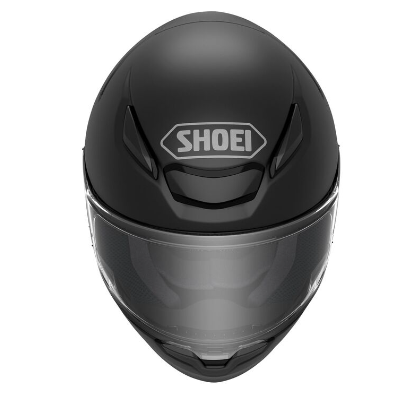
The Shoei RF-1400 helmet is known for its excellent noise reduction. It has a number of features that help to reduce wind noise and turbulence, including:
- A snug fit: The helmet should fit snugly but comfortably. This helps to reduce wind noise and turbulence.
- A chin curtain and breath guard: These features help to further reduce wind noise and turbulence.
- A ventilation system: The ventilation system helps to keep the rider's head cool and dry, which can help to reduce wind noise.
- Aerodynamic design: The helmet's aerodynamic design helps to reduce wind drag and turbulence.
In addition to these features, the Shoei RF-1400 helmet is also made with high-quality materials and construction methods. This helps to reduce the amount of noise that is transmitted through the helmet to the rider's ears.
Overall, the Shoei RF-1400 helmet is one of the quietest helmets on the market. It is a good choice for riders who are looking for a helmet that will reduce wind noise and turbulence, making the ride more comfortable.
Aerodynamics
The Shoei RF-1400 helmet is designed to be aerodynamic, which means that it is designed to reduce wind drag and lift. This is important for a number of reasons. First, reducing wind drag improves fuel efficiency. Second, reducing wind lift helps to keep the helmet stable at high speeds. Third, reducing wind noise makes the ride more comfortable.
The Shoei RF-1400 helmet has a number of aerodynamic features, including:
- A smooth, rounded shell shape: The helmet's shell shape is designed to minimize wind drag and turbulence.
- A spoiler: The spoiler helps to keep the helmet stable at high speeds.
- Vents: The vents are designed to direct air over the helmet in a way that reduces drag and lift.
- Shield: The shield is designed to be flush with the shell when closed, which helps to reduce drag and turbulence.
In addition to these features, the Shoei RF-1400 helmet is also made with high-quality materials and construction methods. This helps to ensure that the helmet will maintain its aerodynamic shape over time.
Overall, the Shoei RF-1400 helmet is a very aerodynamic helmet. It is a good choice for riders who are looking for a helmet that will reduce wind drag and lift, improve fuel efficiency, and make the ride more comfortable.
Additional Features
In addition to the features you have already mentioned, the Shoei RF-1400 helmet also has the following features:
- EQRS (Emergency Quick Release System): This system allows first responders to easily remove the helmet from the rider's head in the event of an accident.
- CWR-F2 Shield System: This shield system is easy to remove and install, even while wearing gloves. It also features a PINLOCK EVO fog-resistant insert.
- Adjustable Visor: The visor can be adjusted to different riding positions, which can help to reduce wind glare and fatigue.
- Removable and Washable Interior: The interior of the helmet can be easily removed and washed, which helps to keep the helmet fresh and clean.
The Shoei RF-1400 helmet is also available in a variety of colors and graphics, so riders can choose a helmet that matches their style.
Overall, the Shoei RF-1400 helmet is a premium full-face helmet that offers the highest levels of safety, comfort, performance, and features. It is a good choice for riders who are looking for the best possible protection and riding experience.
2) Sedici Strada II Parlare Bluetooth Helmet
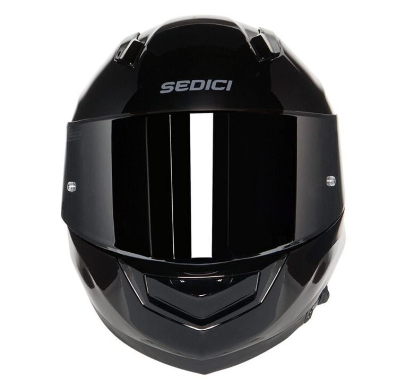
The Sedici Strada II Parlare Bluetooth Helmet is a full-face helmet that combines performance and protection with the convenience of Bluetooth technology. The helmet is made from a proprietary blend of fiberglass and aramid fiber, which provides a strong, lightweight shell that meets or exceeds DOT and ECE-22.05 safety standards. The helmet also features a dual-density EPS liner that helps to absorb impact and protect the rider's head in the event of a crash.
Safety Standards
The Sedici Strada II Parlare Bluetooth Helmet meets or exceeds both DOT and ECE-22.05 safety standards.
- DOT: The DOT (Department of Transportation) standard is the minimum safety standard for helmets sold in the United States. DOT-approved helmets must meet certain requirements for impact protection, penetration resistance, and retention system strength.
- ECE-22.05: The ECE-22.05 standard is a European safety standard that is generally considered to be more rigorous than the DOT standard. ECE-22.05-approved helmets must meet additional requirements for impact protection, penetration resistance, retention system strength, and other factors.
In addition to meeting these safety standards, the Strada II Parlare also features a number of other safety features, such as a dual-density EPS liner, a breath guard, and a reflective neck roll.
Overall, the Sedici Strada II Parlare Bluetooth Helmet is a very safe helmet that meets or exceeds all applicable safety standards. It is a good choice for riders who are looking for a helmet that offers both performance and protection.
Helmet Type

The Sedici Strada II Parlare Bluetooth Helmet is a full-face helmet. Full-face helmets offer the most protection for the rider's head and face, and they are the type of helmet that is required by law for motorcycle riders in many jurisdictions.
Full-face helmets have a chin bar that protects the rider's jaw and chin in the event of a crash. They also have a visor that protects the rider's eyes from the wind, rain, and other debris. Full-face helmets are generally heavier and more expensive than other types of helmets, but they offer the best protection for the rider's head and face.
The Strada II Parlare is a good choice for riders who are looking for a full-face helmet that offers both performance and protection. It is also a good choice for riders who want the convenience of Bluetooth connectivity.
Fit and Comfort
The Sedici Strada II Parlare Bluetooth Helmet is designed to fit snugly but comfortably. The helmet has a removable and washable liner that is made from a moisture-wicking material to help keep the rider's head cool and dry. The helmet also has a chin strap with a quick-release buckle for easy on and off.
The Strada II Parlare is available in a variety of sizes to ensure a proper fit. When choosing a size, it is important to measure your head circumference and consult the helmet's sizing chart. The helmet should fit snugly but not too tightly. It should also not be too loose, as this could reduce its effectiveness in the event of a crash.
Many riders find the Strada II Parlare to be a comfortable helmet to wear for long periods of time. The helmet is well-ventilated to help keep the rider's head cool, and the liner is soft and plush. The helmet is also relatively lightweight, which helps to reduce neck fatigue.
Overall, the Sedici Strada II Parlare Bluetooth Helmet is a comfortable helmet to wear that offers a good fit. However, it is important to try on the helmet before you buy it to make sure that it fits you properly.
Ventilation
The Sedici Strada II Parlare Bluetooth Helmet has a ventilation system that consists of two intake vents on the forehead and three exhaust vents on the rear of the helmet. The intake vents can be opened and closed to control the amount of airflow into the helmet. The exhaust vents help to remove hot, stale air from the helmet.
The helmet's ventilation system is designed to keep the rider's head cool and dry, even on hot days. The intake vents allow fresh air to circulate throughout the helmet, while the exhaust vents help to remove hot, stale air. The helmet's liner is also made from a moisture-wicking material to help keep the rider's head cool and dry.
Many riders find the Strada II Parlare to be a well-ventilated helmet. The helmet's ventilation system is effective at keeping the rider's head cool and dry, even on hot days. However, it is important to note that no helmet can completely eliminate the risk of sweating.
Padding And Liner

The Sedici Strada II Parlare Bluetooth Helmet has a removable and washable liner that is made from a moisture-wicking material to help keep the rider's head cool and dry. The liner is also soft and plush, which makes it comfortable to wear for long periods of time.
The helmet's padding is designed to provide a snug but comfortable fit. The padding is also made from a moisture-wicking material to help keep the rider's head cool and dry. The helmet has cheek pads that can be adjusted to provide a customized fit. The helmet also has a chin strap with a quick-release buckle for easy on and off.
Many riders find the Strada II Parlare to be a comfortable helmet to wear, thanks in part to its padding and liner. The helmet's liner is soft and plush, and the padding is designed to provide a snug but comfortable fit. The helmet's padding is also made from a moisture-wicking material to help keep the rider's head cool and dry.
Weight
The Sedici Strada II Parlare Bluetooth Helmet weighs 3.3 pounds (1500 grams). This is considered to be a lightweight helmet, especially for a full-face helmet. The helmet's lightweight design helps to reduce neck fatigue, which is especially important for riders who do a lot of long-distance riding.
The helmet's lightweight design is due in part to its use of fiberglass and aramid fiber in the shell. These materials are strong and lightweight, which allows the helmet to meet safety standards without adding unnecessary weight.
Many riders find the Sedici Strada II Parlare Bluetooth Helmet to be a comfortable helmet to wear, thanks in part to its lightweight design. The helmet's lightweight design helps to reduce neck fatigue, which can make it more comfortable to wear for long periods of time.
Noise Reduction
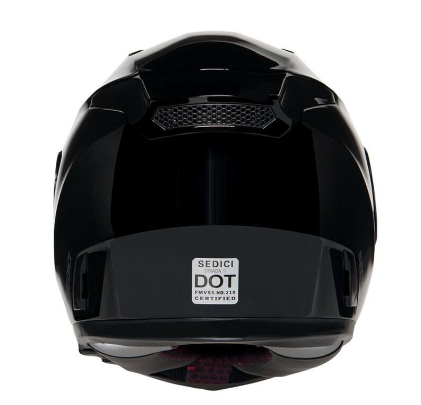
The Sedici Strada II Parlare Bluetooth Helmet is designed to reduce noise from wind, traffic, and other sources. The helmet features a number of noise-reducing features, including:
- A aerodynamic shell that helps to reduce wind noise
- A removable chin skirt that helps to seal off the bottom of the helmet and reduce wind noise
- A thick, plush liner that helps to absorb sound
- Ear pockets that can be used to accommodate earplugs
Many riders find the Sedici Strada II Parlare Bluetooth Helmet to be a quiet helmet. The helmet's noise-reducing features help to reduce wind noise, traffic noise, and other sources of noise. This can make it more comfortable to ride, especially on long rides.
However, it is important to note that no helmet can completely eliminate noise. If you are looking for a helmet that will provide the absolute quietest riding experience, you may want to consider investing in a pair of earplugs.
Aerodynamics
The Sedici Strada II Parlare Bluetooth Helmet is designed to be aerodynamic, which helps to reduce wind noise and drag. The helmet's aerodynamic shell is shaped to reduce wind resistance and turbulence. The helmet also has a number of other aerodynamic features, including:
- A chin skirt that helps to seal off the bottom of the helmet and reduce wind resistance
- A rear spoiler that helps to stabilize the helmet at speed
- Exhaust vents that help to reduce turbulence in the rear of the helmet
Many riders find the Sedici Strada II Parlare Bluetooth Helmet to be a stable and aerodynamic helmet. The helmet's aerodynamic design helps to reduce wind noise and drag, which can make it more comfortable to ride at high speeds.
Additional Features
In addition to the features that you have already mentioned, the Sedici Strada II Parlare Bluetooth Helmet also has the following additional features:
- Pinlock anti-fog insert: The Strada II Parlare comes with a Pinlock anti-fog insert, which helps to prevent fogging on the inside of the visor. This is especially important in cold weather or when riding in humid conditions.
- Breath guard: The Strada II Parlare has a breath guard that helps to prevent the rider's breath from fogging up the visor.
- Reflective neck roll: The Strada II Parlare has a reflective neck roll that helps to increase the rider's visibility to other motorists at night.
- Smartphone app: The Strada II Parlare is compatible with a smartphone app that allows the rider to control the helmet's Bluetooth features, such as answering and rejecting phone calls, adjusting the volume, and selecting music tracks.
Overall, the Sedici Strada II Parlare Bluetooth Helmet is a well-equipped helmet that offers a variety of features for both performance and comfort. It is a good choice for riders who are looking for a helmet that has it all.
3) AGV K1 S Helmet
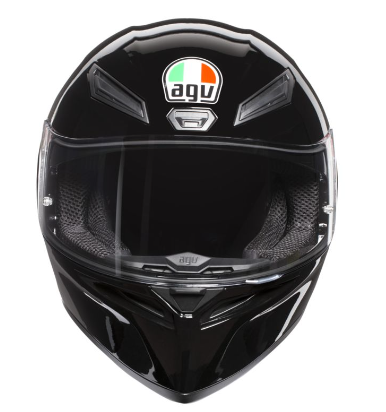
The AGV K1 S Helmet is a full-face motorcycle helmet designed for everyday riding. It features an aerodynamic shape, racing-developed front air vents, and a wind-tunnel-tested spoiler to maximize performance and stability at high speeds. The anti-scratch visor is ready for Pinlock anti-fog lens inserts and allows for a wider vertical and lateral field of vision.
Safety Standards
The AGV K1 S Helmet is DOT and ECE 22.06 certified. This means that it meets or exceeds the highest safety standards in the United States and Europe.
The DOT (Department of Transportation) standard is a minimum safety standard for motorcycle helmets in the United States. It includes tests for impact absorption, penetration resistance, and chin strap retention.
The ECE 22.06 standard is a more comprehensive safety standard for motorcycle helmets in Europe. It includes all of the tests required by the DOT standard, as well as additional tests for impact absorption at different impact velocities and impact angles.
The AGV K1 S Helmet has performed well in both DOT and ECE 22.06 testing. In the SHARP helmet safety rating system, the K1 S Helmet has received a 4-star rating, which is the highest rating possible.
In addition to meeting DOT and ECE 22.06 safety standards, the AGV K1 S Helmet also features a number of other safety features, including:
- A high-strength thermoplastic resin shell that is lightweight and impact-resistant
- A soft and removable Dry-Comfort interior that helps to absorb impact energy
- A double-D ring chin strap for a secure fit
- A visor that is ready for Pinlock anti-fog lens inserts
Overall, the AGV K1 S Helmet is a very safe helmet that offers excellent protection for riders in the event of a crash.
Helmet Type
The AGV K1 S is a full-face motorcycle helmet. This means that it covers the entire head, including the chin. Full-face helmets are the safest type of motorcycle helmet because they offer the most protection in the event of a crash.
Full-face helmets are typically used by riders who engage in sport riding or touring. They are also a good choice for riders who commute in urban areas, where the risk of accidents is higher.
Fit and Comfort
The AGV K1 S Helmet is known for its comfortable fit. It has a soft and removable Dry-Comfort interior that is both comfortable and breathable. The helmet also has a number of features that help to ensure a snug and secure fit, including:
- A variety of shell sizes and cheek pad thicknesses to choose from
- A micrometric adjustable chin strap
- A double-D ring chin strap for a secure fit
The K1 S Helmet is also relatively lightweight, which helps to reduce neck fatigue on long rides.
Here are some reviews from riders who have worn the AGV K1 S Helmet:
- "The AGV K1 S is the most comfortable helmet I've ever worn. It fits like a glove and I can wear it for hours without any discomfort."
- "The Dry-Comfort interior is amazing. It keeps my head cool and dry, even on hot days."
- "The micrometric adjustable chin strap is great. It makes it easy to get the perfect fit."
- "The K1 S Helmet is also very lightweight. I can ride all day without any neck fatigue."
Overall, the AGV K1 S Helmet is a very comfortable helmet that offers a snug and secure fit. It is a good choice for riders who value comfort and safety.
Ventilation
The AGV K1 S Helmet has a well-designed ventilation system that helps to keep the rider's head cool and dry. The helmet has five front vents (three on the forehead and two on the chin guard) and two rear extractors built into the spoiler.
The front vents are adjustable, so riders can customize the airflow to their liking. The rear extractors help to draw hot air away from the rider's head and out of the helmet.
The K1 S Helmet's ventilation system is very effective, even on hot days. Riders report that the helmet keeps their head cool and dry, even after hours of riding in hot weather.
Padding And Liner
The AGV K1 S Helmet has a soft and removable Dry-Comfort interior that is both comfortable and breathable. The padding is made of a combination of different materials, including EPS foam, Dri-Lex, and Dry-Comfort fabric.
The EPS foam is a lightweight and impact-resistant material that helps to absorb impact energy in the event of a crash. The Dri-Lex fabric is a moisture-wicking material that helps to keep the rider's head cool and dry. The Dry-Comfort fabric is a soft and comfortable fabric that is gentle on the skin.
The interior of the K1 S Helmet is also removable and washable, which makes it easy to keep clean.
Weight
The AGV K1 S Helmet weighs approximately 1442 grams (3.18 pounds) in a size medium. This is a relatively lightweight helmet, especially considering that it is a full-face helmet.
The weight of a motorcycle helmet is an important factor to consider when choosing a helmet. A lighter helmet is less likely to cause neck fatigue, especially on long rides. However, it is important to note that weight is not the only factor to consider when choosing a helmet. Safety is the most important factor, and riders should choose a helmet that fits them well and meets DOT or ECE 22.06 safety standards.
Noise Reduction
The AGV K1 S Helmet is known for being a relatively quiet helmet. It has a number of features that help to reduce noise, including:
- An aerodynamic shape that helps to reduce wind resistance and wind noise
- A well-designed ventilation system that helps to keep the rider's head cool and dry, and also helps to reduce wind noise
- A soft and removable Dry-Comfort interior that helps to absorb noise
Aerodynamics
The AGV K1 S Helmet is designed with aerodynamics in mind. It has a number of features that help to reduce wind resistance and improve stability at high speeds, including:
- A smooth, aerodynamic shape
- A rear spoiler that helps to reduce drag and lift
- Vents that are positioned to reduce turbulence
The aerodynamic design of the K1 S Helmet helps to reduce wind resistance, which can improve fuel efficiency and reduce fatigue on long rides. It also helps to improve stability at high speeds, which can make the rider feel more confident and in control.
Additional Features
In addition to the features already mentioned, the AGV K1 S Helmet also has a number of other features, including:
- Pinlock anti-fog lens insert compatibility: The K1 S Helmet is compatible with Pinlock anti-fog lens inserts, which can help to prevent the visor from fogging up in cold or humid weather.
- Micrometer adjustable chin strap: The K1 S Helmet has a micrometric adjustable chin strap that allows riders to easily and precisely adjust the fit of the helmet.
- Double-D ring chin strap: The K1 S Helmet also has a double-D ring chin strap, which is the most secure type of chin strap available.
- Communication system compatibility: The K1 S Helmet is compatible with most popular communication systems, so riders can easily stay connected with other riders or passengers.
- Multi-color and graphic options: The K1 S Helmet is available in a variety of colors and graphics, so riders can choose a helmet that matches their style and personality.
Overall, the AGV K1 S Helmet is a well-designed and feature-rich helmet that offers excellent value for the money. It is a good choice for riders of all skill levels, from beginners to experienced riders.
4) Icon Airflite Peacekeeper Rubatone Helmet

The Icon Airflite Peacekeeper Rubatone Helmet is a full-face helmet with a sleek, aggressive design. It features a matte black polycarbonate shell with a rubatone finish, giving it a stealthy, understated look. The helmet also has a number of features that make it ideal for a variety of riding styles.
Safety Standards
The Icon Airflite Peacekeeper Rubatone Helmet is DOT and ECE certified, meeting or exceeding the highest safety standards in the United States and Europe. DOT certification means that the helmet meets the safety standards set by the United States Department of Transportation. ECE certification means that the helmet meets the safety standards set by the Economic Commission for Europe.
Helmet Type
The Icon Airflite Peacekeeper Rubatone Helmet is a full-face helmet. Full-face helmets provide the most protection for the head and face in the event of a crash. They cover the entire head, including the forehead, chin, and cheeks.
Fit and Comfort
The Icon Airflite Peacekeeper Rubatone Helmet is designed to fit snugly but comfortably on the head. It has a removable and washable liner that can be adjusted to provide a custom fit. The helmet also has a variety of features to improve comfort, such as a breath deflector and a chin curtain.
Ventilation
The Icon Airflite Peacekeeper Rubatone Helmet has a total of four vents, including a chin vent, two crown vents, and a rear exhaust vent. This system provides excellent airflow, keeping your head cool and comfortable even on hot days.
Padding and Liner
The Icon Airflite Peacekeeper Rubatone Helmet has a removable and washable Hydradry™ liner. This liner is made from a moisture-wicking material that helps to keep your head cool and dry. The liner is also antimicrobial, helping to prevent the growth of bacteria and odors.
Weight
The Icon Airflite Peacekeeper Rubatone Helmet weighs approximately 1720 grams (60.6 ounces) in a size XXXL. This is a relatively lightweight helmet, making it comfortable to wear for long periods of time.
Noise Reduction
The Icon Airflite Peacekeeper Rubatone Helmet is designed to reduce wind noise. The helmet has a aerodynamic shell that helps to deflect wind and reduce drag. The helmet also has a snug-fitting liner that helps to seal out noise.
Aerodynamics
The Icon Airflite Peacekeeper Rubatone Helmet has an aerodynamic shell that helps to reduce wind drag and improve stability at high speeds. The helmet also has a visor that is designed to minimize wind buffeting.
Additional Features
The Icon Airflite Peacekeeper Rubatone Helmet comes with a number of additional features, including:
- Drop-down internal sun visor: The helmet has a drop-down internal sun visor that can be easily deployed with the flick of a switch.
- Color-matched Airflite Airfoil top spoiler: The helmet comes with a color-matched Airflite Airfoil top spoiler that helps to improve stability at high speeds.
- Airflite Face Shield: The helmet comes with a clear and RST Bronze Airflite Face Shield.
5) Scorpion EXO-R420 Helmet

The Scorpion EXO-R420 Helmet is a full-face street helmet that offers a great combination of features, performance, and value. It is DOT and Snell certified, meaning that it meets the highest safety standards in the United States.
Safety Standards
The Scorpion EXO-R420 Helmet is DOT and Snell certified, meaning that it meets the highest safety standards in the United States.
Helmet Type
The EXO-R420 is a full-face street helmet. This means that it covers the entire head, including the chin and jaw. Full-face helmets offer the most protection in the event of a crash.
Fit and Comfort
The EXO-R420 is designed to fit snugly but comfortably. The helmet has a variety of features that make it comfortable to wear for long periods of time, including:
- A removable and washable liner
- KwikWick III moisture-wicking liner fabric
- A breath deflector and chin curtain to reduce wind noise and turbulence
- Emergency release cheek pads
Ventilation
The EXO-R420 has a well-designed ventilation system that helps to keep riders cool and comfortable. The helmet has a large top vent and mouth vents that allow for plenty of airflow. The EXO-R420 also has a chin vent that can be opened or closed to control airflow.
Padding and Liner
The EXO-R420 has a multi-layer EPS liner that provides superior energy absorption in the event of a crash. The helmet's liner is also removable and washable, making it easy to keep the helmet clean and fresh.
Weight
The EXO-R420 is a lightweight helmet, weighing in at just 3.36 pounds (1.53 kilograms). This makes it comfortable to wear for long periods of time.
Noise Reduction
The EXO-R420 is a relatively quiet helmet. The helmet's aerodynamic design and wind noise reduction features help to reduce noise levels.
Aerodynamics
The EXO-R420 has a sleek, aerodynamic design that helps to reduce drag and improve fuel efficiency. The helmet's shell is also designed to minimize turbulence and wind noise.
Additional Features
The EXO-R420 has a variety of additional features, including:
- An Ellip-Tec II face shield system that is easy to use and provides a secure seal
- Optically clear and anti-scratch face shield
- Pinlock MaxVision anti-fog insert (can be purchased separately)
- Bluetooth speaker pockets
6) AGV K6 S Helmet
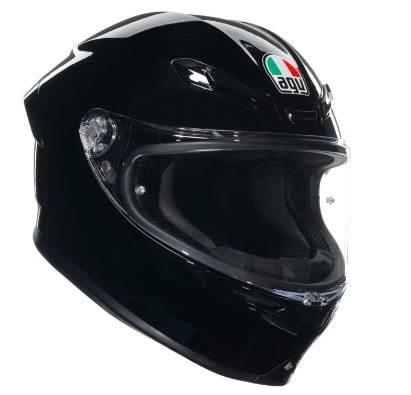
The AGV K6 S is a lightweight, comfortable, and safe helmet that is well-suited for a variety of riding types, including sport, touring, and commuting.
Safety Standards
The AGV K6 S Helmet is DOT and ECE 22.06 certified. This means that it meets the highest safety standards in the world. The DOT standard is set by the US Department of Transportation, and the ECE 22.06 standard is set by the Economic Commission for Europe.
Both standards require helmets to undergo a series of rigorous tests, including impact tests, penetration tests, and visor tests. The K6 S has passed all of these tests with flying colors, which means that it is one of the safest helmets on the market.
Helmet Type
The AGV K6 S is a full-face helmet. This means that it covers the entire head, including the face, chin, and jaw. Full-face helmets provide the most protection in the event of a crash, and they are the most popular type of helmet among motorcyclists.
Fit and Comfort
The AGV K6 S is known for its excellent fit and comfort. The helmet has a snug but not too tight fit, and the interior is made of soft, plush materials. The helmet also has a number of features that make it more comfortable to wear for long periods of time, such as an adjustable chin strap and a removable breath guard.
Ventilation
The AGV K6 S has a new ventilation system that provides more airflow and keeps the rider cooler. The system features four intake vents on the front of the helmet and two exhaust vents on the back of the helmet. The vents are adjustable, so riders can control how much airflow they want.
Padding and Liner
The AGV K6 S has a plush interior that is anti-bacterial and moisture wicking. The padding is also removable and washable, which makes it easy to keep the helmet clean and fresh.
Weight
The AGV K6 S is one of the lightest full-face helmets on the market. It weighs just 1298 grams (2.86 pounds). This makes it a great choice for riders who want a helmet that is lightweight and comfortable to wear for long periods of time.
Noise Reduction
The AGV K6 S is a relatively quiet helmet. The new ventilation system helps to reduce noise, and the plush interior helps to absorb sound. However, it is important to note that no helmet is completely silent, and riders should always wear earplugs or other hearing protection when riding.
Aerodynamics
The AGV K6 S has an improved aerodynamic design that reduces drag and turbulence at high speeds. This makes the helmet more stable and comfortable to wear at high speeds.
Additional Features
The AGV K6 S has a number of additional features, including:
- Emergency release cheek pads for easier removal in the event of an accident
- A collarbone safe profile to reduce the risk of injury in the event of a crash
- Preparation for an AGV Ark communication system
- A max-vision pinlock lens
The AGV K6 S is a premium helmet, but it is worth the investment for riders who are looking for the best possible protection and performance.
7) Shoei Neotec 2
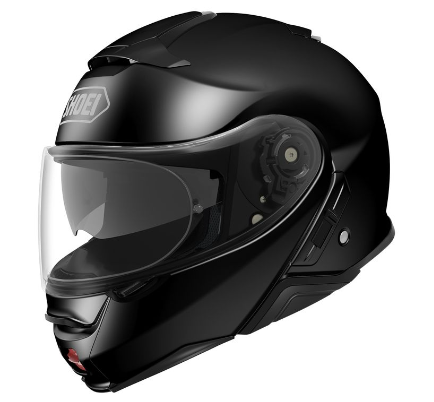
The Shoei Neotec 2 helmet is a modular touring helmet that is designed to be comfortable, quiet, and versatile. It is ECE 22.06 certified and has a number of features that make it a great choice for riders who are looking for a helmet that can do it all.
Safety Standards
The Shoei Neotec 2 is ECE 22.06 certified, which is one of the most stringent safety standards in the world. This means that it has been tested and certified to meet high standards of impact protection and retention.
Helmet Type
The Neotec 2 is a modular helmet, which means that the chin bar can be flipped up. This makes it easy to put on and take off the helmet, and it also allows riders to communicate with passengers or eat and drink without having to remove their helmet entirely.
Fit and Comfort
The Neotec 2 is designed to be a comfortable helmet, with a soft, removable, and washable interior. The helmet also has a number of adjustable features, such as the cheek pads and crown liner, to ensure a secure and comfortable fit.
Ventilation
The Neotec 2 has a number of ventilation vents to help keep riders cool and comfortable. The vents are located on the top, front, and sides of the helmet, and they can be opened and closed to adjust the airflow.
Padding and Liner
The Neotec 2 has a soft and comfortable interior padding. The padding is removable and washable, making it easy to keep the helmet clean and fresh. The helmet also has a crown liner that can be adjusted for a better fit.
Weight
The Neotec 2 weighs approximately 1.7 kg, which is relatively average for a modular helmet. The helmet's weight is evenly distributed, so it does not feel heavy or cumbersome on the head.
Noise Reduction
The Neotec 2 is a relatively quiet helmet, thanks to its AIM+ shell construction and ventilation system. The AIM+ shell is made from a blend of advanced materials that are designed to absorb and disperse impact energy. The ventilation system helps to reduce wind noise by channeling air through the helmet and out the vents.
Aerodynamics
The Neotec 2 has a sleek aerodynamic design that helps to reduce wind resistance and drag. The helmet also has a number of features, such as the spoiler on the back of the shell, that help to keep the helmet stable at high speeds.
Additional Features
The Neotec 2 has a number of additional features, including:
- Pinlock EVO anti-fog system
- Emergency Quick Release System (EQRS)
- Sena SRL communication system compatibility
The Pinlock EVO anti-fog system helps to keep the shield from fogging up, even in humid conditions. The EQRS makes it easy to remove the helmet in the event of an accident. The Sena SRL communication system is a Bluetooth communication system that can be integrated into the Neotec 2 helmet.
Overall, the Shoei Neotec 2 is a well-designed and manufactured helmet that offers a good balance of safety, comfort, features, and performance. It is a great choice for riders who are looking for a versatile helmet that can be used for touring, commuting, and everyday riding.
8) Schuberth C5 Helmet

The Schuberth C5 Helmet is a premium modular touring helmet that blends safety, superior aerodynamics, and a lightweight design. It is the newest "C" helmet from Schuberth, and it features a number of upgrades and improvements over its predecessor, the C4.
Safety Standards
The Schuberth C5 Helmet is certified to meet both the DOT and ECE 22.06 safety standards. This means that it has been tested and proven to provide a high level of protection in the event of a crash.
The C5 also features P/J dual homologation, which means that it is safe to use with the chin bar open or closed. This is a valuable feature for riders who want to be able to flip up the chin bar for convenience or ventilation.
Helmet Type
The Schuberth C5 is a modular helmet. This means that the chin bar can be flipped up or down, depending on the rider's preference. Modular helmets are popular with touring riders because they offer the flexibility of a full-face helmet with the convenience of an open-face helmet.
Fit and Comfort
The Schuberth C5 Helmet is designed to fit snugly but comfortably on the rider's head. The interior of the helmet is lined with a soft, seamless fabric that is designed to reduce pressure points and provide a comfortable fit for long periods of time.
The C5 also features a number of adjustable features, including a chin strap, cheek pads, and a crown liner. This allows riders to customize the fit of the helmet to their individual needs.
Ventilation
The Schuberth C5 Helmet has a complex multi-channel ventilation system that is designed to keep the rider's head cool and dry. The system includes vents on the forehead, chin, and back of the helmet. The vents can be opened or closed to adjust the amount of airflow.
The C5 also has an anti-fog visor that helps to prevent fogging in humid conditions.
Padding and Liner
The Schuberth C5 Helmet is lined with a soft, seamless fabric that is designed to reduce pressure points and provide a comfortable fit for long periods of time. The liner is also removable and washable, making it easy to keep the helmet clean and fresh.
Weight
The Schuberth C5 Helmet weighs around 1640 grams in the smallest shell size. This makes it one of the lightest modular helmets on the market.
Noise Reduction
The Schuberth C5 Helmet is designed to be very quiet. The shell and ventilation system are designed to reduce wind noise, and the interior of the helmet is lined with a sound-absorbing material.
Aerodynamics
The Schuberth C5 Helmet has an aerodynamically tuned shell that is designed to reduce drag and lift, and to improve stability at high speeds. The helmet also has a spoiler at the back that helps to reduce turbulence.
Additional Features
The Schuberth C5 Helmet comes with a number of additional features, including:
- An integrated sun visor
- A built-in antenna for communication systems
- A reflective area on the wind deflector, neck roll, visor sealing, and helmet stickers for enhanced visibility
Overall, the Schuberth C5 Helmet is a well-designed and well-built modular helmet that offers excellent safety, comfort, and performance. It is a good choice for riders who are looking for a helmet that can be used for both short and long rides.
9) Arai XD-4 Helmet

The Arai XD-4 is a premium dual-sport helmet that is known for its exceptional safety, comfort, and ventilation. It is also one of the few dual-sport helmets on the market to achieve a Snell safety rating.
Safety Standards
The Arai XD-4 meets the Snell M2020 safety standard, which is one of the most stringent helmet safety standards in the world. This means that the helmet has been tested and proven to provide excellent protection in the event of a crash.
Helmet Type
The Arai XD-4 is a dual-sport helmet. This means that it is designed for both on-road and off-road riding. Dual-sport helmets typically have a peak (also known as a visor) that helps to protect the rider's eyes from the sun and other debris.
Fit and Comfort
The Arai XD-4 has an intermediate oval head shape, which is the most common head shape in the Western world. The helmet also has a removable and washable liner, which helps to keep it clean and comfortable. The XD-4 also features Arai's patented Facial Contour System (FCS) cheek pads, which provide a customized fit and help to reduce wind noise.
Ventilation
The Arai XD-4 has a number of ventilation ports that help to keep the rider's head cool and dry. The top vents are designed to draw in fresh air, while the rear vents help to expel hot air. The XD-4 also has a chin vent that helps to prevent fogging on the face shield.
Padding and Liner
The Arai XD-4 has a removable and washable liner that is made from a soft and comfortable material. The liner is also hypoallergenic, so it is less likely to irritate the rider's skin. The XD-4 also features Arai's patented Emergency Cheek Pad Release System, which makes it easy to remove the helmet in the event of a crash.
Weight
The Arai XD-4 weighs approximately 3.7 pounds (1.7 kilograms). This is slightly heavier than some other dual-sport helmets on the market, but it is still relatively lightweight for a helmet of its caliber.
Noise Reduction
The Arai XD-4 is designed to reduce wind noise. The helmet's shell shape and ventilation system help to deflect wind away from the rider's ears. The XD-4 also features Arai's patented FCS cheek pads, which help to create a snug fit and reduce wind noise.
Aerodynamics
The Arai XD-4 has an aerodynamic design that helps to reduce drag and improve stability at high speeds. The helmet's peak is also designed to help reduce drag and lift.
Additional Features
In addition to the features listed above, the Arai XD-4 also has a number of other features, including:
- A brow vent on the face shield that helps to reduce fogging
- A visor that can be adjusted to three different positions
- A D-ring closure system that is secure and easy to use
- A reflective strip on the back of the helmet for improved visibility
Overall, the Arai XD-4 is a top-of-the-line dual-sport helmet that offers excellent safety, comfort, ventilation, and a number of other features. It is a great choice for riders who are looking for the best possible protection and performance.
10) Shoei GT-Air II Helmet
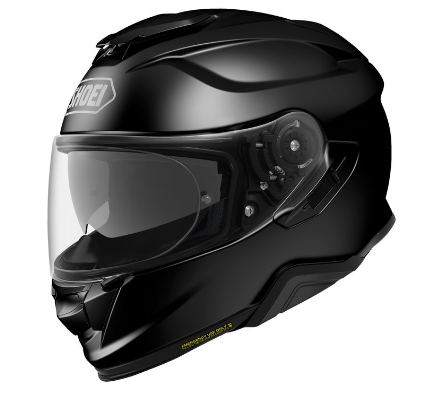
The Shoei GT-Air II is a premium full-face touring helmet with an internal sun shield. It is the successor to the popular GT-Air helmet, and it has been updated with a number of new features and improvements.
Safety Standards
The Shoei GT-Air II helmet meets or exceeds the following safety standards:
- DOT (United States)
- Snell M2020 (United States)
- ECE 22.05 (Europe)
- JIS T 8133 (Japan)
These standards are designed to ensure that motorcycle helmets provide adequate protection against head injuries in the event of a crash.
Helmet Type
The Shoei GT-Air II is a full-face helmet. Full-face helmets provide the most protection for the rider's head and face in the event of a crash.
Fit and Comfort
The Shoei GT-Air II is known for its comfortable fit. It has a 3D Max-Dry System II interior that is designed to wick away moisture and keep the rider's head cool and dry. The helmet also has a number of adjustable features, including cheek pads and a chin strap, to ensure a custom fit.
Ventilation
The Shoei GT-Air II has a very good ventilation system. It has three intake vents and six exhaust vents that are designed to keep the rider cool and comfortable in all weather conditions. The helmet also has a chin curtain that helps to prevent wind from blowing into the helmet.
Padding and Liner
The Shoei GT-Air II has a fully removable, washable, and adjustable 3D Max-Dry Interior System. The padding is made of a soft, comfortable material that is designed to wick away moisture and keep the rider's head cool and dry.
Weight
The Shoei GT-Air II weighs approximately 1,550 grams (3.42 pounds). This is a relatively average weight for a full-face helmet.
Noise Reduction
The Shoei GT-Air II is a very quiet helmet. It has a number of features that help to reduce wind noise, including a noise-reduction liner and an airtight window beading.
Aerodynamics
The Shoei GT-Air II has a new aerodynamic shell design that is said to reduce drag and wind noise. The helmet also has a shell-integrated spoiler that helps to reduce lift and drag.
Additional Features
The Shoei GT-Air II has a number of additional features, including:
- CNS-1 face shield with Pinlock EVO fog-resistant insert
- QR-E Easy Release System for quick and easy shield changes
- Micro-ratchet chin strap
- Compatible with the Sena SRL2 Bluetooth communication system
11) Icon Airflite Crosslink Helmet
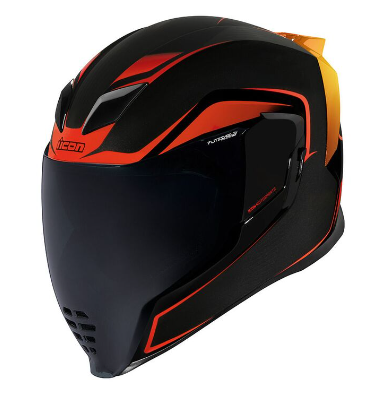
The Icon Airflite Crosslink Helmet is a full-face street helmet that is known for its aggressive styling, excellent ventilation, and comfortable fit. It is made with a polycarbonate shell and has a dual-density EPS liner for impact protection. It is also DOT and ECE 22.05 certified.
Safety Standards
The Icon Airflite Crosslink Helmet is DOT and ECE 22.05 certified. This means that it has met the safety standards set by the United States Department of Transportation (DOT) and the Economic Commission for Europe (ECE).
Helmet Type
The Icon Airflite Crosslink Helmet is a full-face street helmet. This means that it covers the entire head, including the face. Full-face helmets offer the most protection in the event of a crash.
Fit and Comfort
The Icon Airflite Crosslink Helmet has a plush Hydradry liner that wicks moisture away from your skin and keeps you comfortable on long rides. The helmet also has a variety of adjustable features, including a chin strap and cheek pads, to ensure a secure and comfortable fit.
Ventilation
The Icon Airflite Crosslink Helmet has a large chin vent, two brow vents, and four rear vents that work together to keep your head cool and dry. The helmet also has a removable nose guard that can be used to block wind and dust.
Padding and Liner
The Icon Airflite Crosslink Helmet has a plush Hydradry liner that wicks moisture away from your skin and keeps you comfortable on long rides. The liner is also removable and washable.
Weight
The Icon Airflite Crosslink Helmet weighs approximately 3.2 pounds. This is a relatively lightweight helmet, which can be important for riders who do long rides or who have neck problems.
Noise Reduction
The Icon Airflite Crosslink Helmet has good noise reduction thanks to its aerodynamic design and plush Hydradry liner. The helmet also has a removable chin curtain that can be used to further reduce wind noise.
Aerodynamics
The Icon Airflite Crosslink Helmet has an aerodynamic design that helps to reduce wind drag and noise. The helmet also has a visor that can be adjusted to reduce wind lift.
Additional Features
The Icon Airflite Crosslink Helmet has a number of additional features, including:
- Internal drop-down sun shield
- Quick-change face shield
- Removable nose guard
- Removable chin curtain
- D-ring chin strap
- Multiple vents
12) The Shoei RF-1400 Prologue Helmet
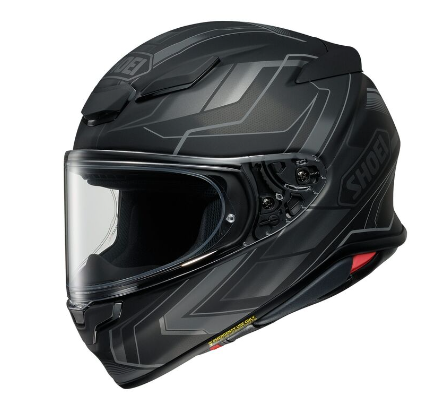
The Shoei RF-1400 Prologue Helmet is a premium full-face motorcycle helmet that is known for its safety, comfort, and performance. It is the latest generation in Shoei's flagship RF series, and it features a number of significant improvements over its predecessor, the RF-1200.
Safety standards
The Shoei RF-1400 Prologue Helmet is certified to meet the following safety standards:
- Snell M2020D
- DOT
These standards are among the most rigorous in the world, and they ensure that the helmet has been tested and meets certain safety requirements.
Helmet type
The Shoei RF-1400 Prologue Helmet is a full-face helmet. This means that it provides protection for the entire head, including the face. Full-face helmets are the safest type of motorcycle helmet, and they are recommended for all riders.
Fit and comfort
The Shoei RF-1400 Prologue Helmet is known for its comfortable fit. It has a fully removable and washable liner that is made from Shoei's Max-Dry material, which is designed to wick away sweat and keep your head cool and dry. The helmet also has a number of ventilation ports that help to circulate air and keep you comfortable on long rides.
Ventilation
The Shoei RF-1400 Prologue Helmet has a number of ventilation ports that help to circulate air and keep you comfortable on long rides. The top of the helmet has two intake vents and two exhaust vents. The front of the helmet also has a chin vent. The rear of the helmet has a large exhaust vent.
Padding and liner
The Shoei RF-1400 Prologue Helmet has a fully removable and washable liner that is made from Shoei's Max-Dry material. The liner is designed to wick away sweat and keep your head cool and dry. The helmet also has a number of cheek pads and brow pads that can be adjusted to provide a custom fit.
Weight
The Shoei RF-1400 Prologue Helmet weighs approximately 1,500 grams (3.31 pounds). This makes it one of the lighter full-face helmets on the market.
Noise reduction
The Shoei RF-1400 Prologue Helmet is known for being a very quiet helmet. This is due to a number of factors, including its aerodynamic design, its new shield system, and its voluminous cheek pads.
Aerodynamics
The Shoei RF-1400 Prologue Helmet has a very aerodynamic design. This helps to reduce wind noise and drag. The helmet also has a number of features that help to improve aerodynamics, such as a spoiler on the rear of the helmet and vortex generators on the sides of the shield.
Additional features
The Shoei RF-1400 Prologue Helmet has a number of additional features, including:
- Emergency Quick Release System (E.Q.R.S.) for easy removal of the helmet in the event of a crash
- Pinlock EVO fog-resistant insert
- Breath guard and chin curtain
- Double-D ring chin strap
How To Choose The Perfect Motorcycle Helmet
Choosing the right motorcycle helmet is crucial for your safety while riding. Here are several factors to consider when selecting a motorcycle helmet:
Safety Standards
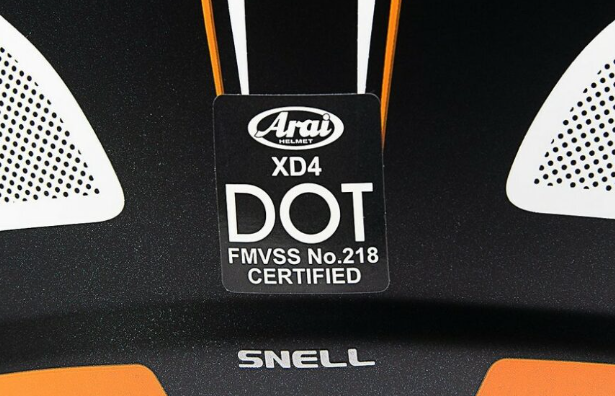
Safety standards for motorcycle helmets are essential to ensure that helmets provide a certain level of protection to riders in various situations. These standards are developed and enforced by organizations and government agencies responsible for motorcycle safety. The following are some of the key safety standards and what they entail:
DOT (Department of Transportation):
- DOT is a U.S. government agency responsible for regulating safety standards for various modes of transportation, including motorcycle helmets.
- DOT-compliant helmets meet or exceed specific safety requirements, such as impact protection, penetration resistance, and retention system strength.
- Helmets that meet DOT standards are identified by a DOT sticker on the outside back of the helmet. This sticker indicates that the helmet has been tested and found to meet or exceed DOT requirements.
ECE (Economic Commission for Europe):
- ECE is a European standard for motorcycle helmets used in many countries worldwide, including those in the European Union.
- ECE standards are more comprehensive than DOT standards, covering a wider range of impact scenarios, visor performance, and more.
- ECE-certified helmets have an ECE label or tag affixed inside the helmet, indicating compliance with European safety standards.
SNELL (Snell Memorial Foundation):
- SNELL is a non-profit organization that sets rigorous safety standards for helmets used in motorsports, including motorcycle racing.
- SNELL standards are known for their strict testing criteria, including high-speed impact tests.
- Helmets that meet SNELL standards bear the SNELL certification label.
Other Standards:
- Some countries may have their own national standards for motorcycle helmets. For example, Japan has its own standard called JIS (Japanese Industrial Standard).
- Additionally, some helmets may be certified by both DOT and ECE or other combinations, indicating that they meet the safety requirements of multiple regions.
Testing Procedures:
- Helmet testing typically involves various impact tests, penetration resistance tests, and tests related to the helmet's retention system (chin strap).
- Helmets are subjected to different types of impacts, including linear and rotational forces, to ensure comprehensive protection.
- These standards also specify criteria for peripheral vision, field of view, and visor performance.
It's important for riders to choose helmets that meet the relevant safety standards for their region. Meeting these standards ensures that the helmet can effectively protect you in various real-world riding scenarios, including crashes. While the standards provide a baseline level of safety, it's also essential to consider additional features like fit, comfort, and style to find the right helmet for your specific needs and preferences.
Remember that, over time, safety standards may evolve to incorporate new technologies and research findings, so it's a good idea to stay informed about the latest developments in helmet safety standards in your region.
Helmet Type
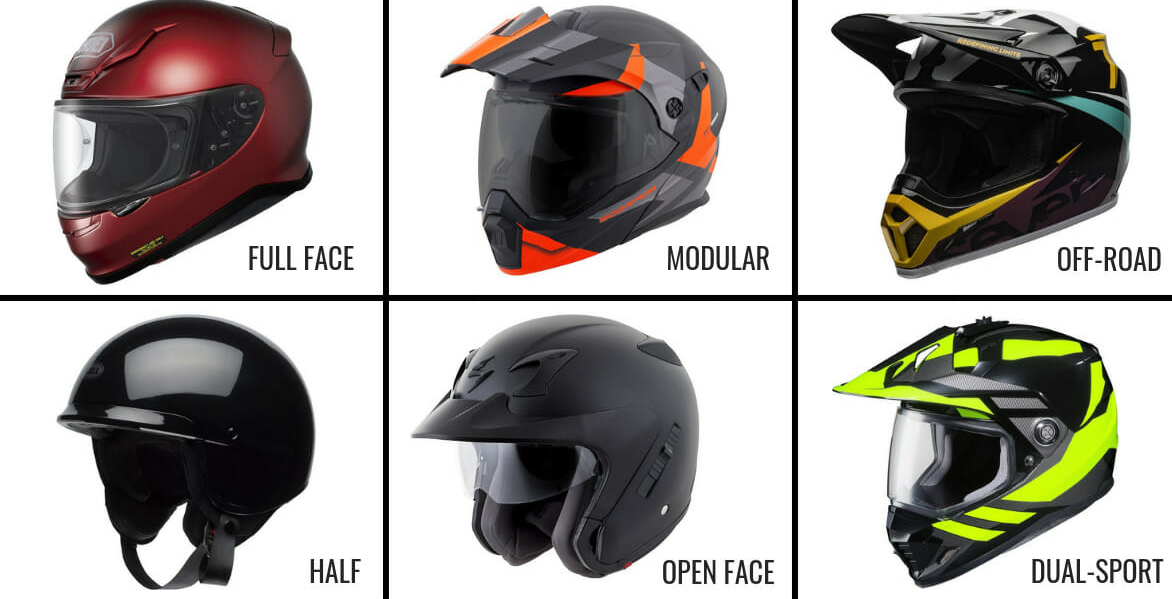
Motorcycle helmets come in various types, each offering different levels of protection and features to cater to different riding styles and preferences. Here's an expanded look at the most common types of motorcycle helmets:
Full-Face Helmet:
- Full-face helmets provide the most comprehensive protection by covering the entire head, including the face and chin.
- They have a sturdy chin bar and a face shield that offers excellent protection against wind, debris, and insects.
- Full-face helmets are ideal for all types of riding, including long-distance touring, sport riding, and daily commuting, as they offer the highest level of safety and weather protection.
Open-Face Helmet (3/4 Helmet):
- Open-face helmets cover the top and sides of the head but lack a chin bar, leaving the face and chin exposed.
- They are popular among cruiser and scooter riders due to their classic look and ease of use, allowing for better visibility and ventilation.
- Open-face helmets often come with a visor or goggles to protect the eyes, but the rider's face remains vulnerable to impacts and weather conditions.
Modular Helmet (Flip-Up Helmet):
- Modular helmets offer a combination of features from full-face and open-face helmets. They have a hinged chin bar that can be flipped up to convert the helmet into an open-face style.
- This versatility makes modular helmets suitable for riders who want the convenience of an open-face design with the added protection of a full-face helmet.
- However, it's essential to ensure that the chin bar is securely locked in the down position when riding for maximum safety.
Half-Helmet (Skull Cap):
- Half-helmets provide minimal coverage, typically covering only the top of the head, leaving the face, ears, and neck exposed.
- They are often chosen for their lightweight and minimalist design and are favored by cruiser and custom bike enthusiasts.
- While half-helmets offer the least protection among all helmet types, they may be legally required in some regions for specific types of riders.
Off-Road Helmet (Motocross Helmet):
- Off-road helmets are designed for use in motocross, dirt biking, and other off-road activities.
- They feature a distinctive design with a peak visor for sun and debris protection, an extended chin bar, and a more open face area for increased airflow.
- Off-road helmets are lightweight and optimized for maneuverability, making them suitable for high-intensity off-road riding.
Dual-Sport Helmet:
- Dual-sport helmets combine features from full-face and off-road helmets, making them versatile for both on-road and off-road use.
- They have a peak visor, good ventilation, and a larger face shield to provide the adaptability required for varied riding conditions.
- Dual-sport helmets are popular among adventure riders who transition between paved roads and dirt trails.
Adventure/Touring Helmet:
- Adventure and touring helmets are designed for long-distance riders who may encounter varying weather conditions.
- They often have a larger face shield, good ventilation, and a comfortable fit for extended rides.
- These helmets can be used with or without goggles and may have additional features like sun visors and Bluetooth communication systems.
When choosing a motorcycle helmet, consider your riding style, the level of protection you need, comfort, and safety standards compliance. Remember that the best helmet for you is one that fits well, suits your riding preferences, and meets the necessary safety standards for your region.
Fit And Comfort

Achieving the right fit and ensuring comfort with your motorcycle helmet are critical factors for both safety and your overall riding experience. Here's an expanded look at fit and comfort considerations when choosing a motorcycle helmet:
Proper Fit:
- Head Shape: Helmets come in various shapes to accommodate different head shapes, such as round, oval, or intermediate. It's essential to identify your head shape and choose a helmet that matches it for a secure and comfortable fit.
- Sizing: Measure your head's circumference using a flexible tape measure to determine your helmet size. Different brands and models may have slightly different sizing charts, so refer to the manufacturer's guidelines.
- Try Before You Buy: Whenever possible, try on helmets in person. Put the helmet on, fasten the chin strap, and check for any pressure points or discomfort. Ensure the helmet sits level on your head, with the top edge just above your eyebrows.
- Comfort Liner: A well-fitting helmet should have a snug but not overly tight fit. The comfort liner inside the helmet should mold to the shape of your head over time, providing a custom fit.
- Cheek Pads: The cheek pads should also fit comfortably and snugly against your cheeks without causing excessive pressure. They play a crucial role in maintaining the helmet's stability.
- Chin Strap: The chin strap should be securely fastened. It should be tight enough to prevent the helmet from moving but not so tight that it causes discomfort or difficulty breathing.
Comfort:
- Padding: The interior padding of the helmet should be comfortable and moisture-wicking to keep you cool and dry during rides. High-quality padding materials, such as moisture-wicking fabric and memory foam, contribute to comfort.
- Ventilation: Adequate ventilation is essential to prevent overheating and discomfort during hot weather. Look for helmets with adjustable vents that allow you to regulate airflow.
- Weight: Lighter helmets are generally more comfortable, especially during long rides. However, ensure that the helmet still meets safety standards.
- Noise Reduction: Helmets with effective noise reduction features can enhance comfort during extended rides by reducing wind noise and rider fatigue.
- Sun Protection: Helmets with built-in sun visors or a tinted shield can protect your eyes from sun glare, improving overall comfort and safety.
- Visor Clarity: The clarity and quality of the visor or face shield can affect your comfort by providing a clear field of vision and reducing glare.
- Ergonomics: Helmets with ergonomic designs, including well-placed controls for ventilation and visor operation, contribute to overall comfort and ease of use.
Customization:
- Some helmets come with adjustable features, such as removable padding, cheek pads, and liners, allowing you to customize the fit and comfort to your liking.
Break-In Period:
- New helmets may feel slightly tight initially but should become more comfortable as they break in. It's essential to give your helmet some time to conform to the shape of your head.
Long-Term Comfort:
- Consider how comfortable the helmet will be during extended rides, as this can impact your endurance and focus while riding.
Consideration for Glasses and Communication Systems:
- If you wear glasses or plan to use a communication system, ensure that the helmet can accommodate these accessories comfortably.
Ultimately, finding a helmet that fits correctly and is comfortable for your specific head shape and riding needs is crucial for your safety and enjoyment on the road. Take the time to try on different helmets, pay attention to comfort features, and prioritize fit and comfort alongside safety standards when making your selection.
Ventilation

Ventilation is a crucial aspect of motorcycle helmets that plays a significant role in rider comfort, especially during hot weather or extended rides. Proper ventilation helps regulate temperature, reduce fogging, and prevent overheating inside the helmet. Here's an expanded look at ventilation considerations for motorcycle helmets:
Ventilation System:
- Helmets typically feature a ventilation system composed of intake and exhaust vents. These vents allow air to flow through the helmet, carrying away heat and moisture from the rider's head.
Intake Vents:
- Intake vents are strategically placed on the front of the helmet to allow fresh air to enter. They can usually be opened or closed, allowing you to control the amount of airflow.
- The number and size of intake vents vary between helmet models. Helmets designed for hot weather riding often have larger intake vents for increased airflow.
Exhaust Vents:
- Exhaust vents are located at the back or rear of the helmet and serve to expel warm, moist air from inside the helmet.
- Effective exhaust vents are essential for maintaining proper airflow and preventing the buildup of heat and humidity.
Chin Vent:
- Some helmets feature a chin vent or mouth vent designed to direct air onto the rider's face shield or goggles. This helps reduce fogging and keeps the rider cool.
- Chin vents are particularly useful for riders who wear goggles, as they can help direct air onto the goggles' lenses to maintain visibility.
Adjustable Ventilation:
- Many helmets offer adjustable vents that allow riders to customize the airflow based on their preferences and the weather conditions. Adjustable vents are usually controlled via sliders or switches on the helmet's exterior.
Aerodynamics and Ventilation:
- Helmets are designed to balance aerodynamics with ventilation. Properly designed helmets ensure that air flows smoothly over the helmet's surface without causing turbulence or excessive wind noise.
Cooling Channels:
- Some helmets incorporate cooling channels or grooves within the EPS (Expanded Polystyrene) liner to direct airflow across the rider's head for improved cooling.
Moisture-Wicking Liner:
- Helmets with moisture-wicking interior liners help manage sweat and moisture, enhancing overall comfort. This liner material helps move sweat away from the skin to keep the rider dry.
Sun Visors and Shields:
- Helmets with sun visors or face shields often have channels or vents designed to minimize fogging while providing sun protection.
Noise Reduction:
- Effective ventilation design can also contribute to noise reduction by directing airflow to reduce wind noise, which can improve rider comfort, especially during long rides.
Removable Liners:
- Some helmets have removable liners and cheek pads, which can be taken out for cleaning or replaced to maintain their moisture-wicking properties and overall freshness.
Ventilation in Modular Helmets:
- Modular helmets may have ventilation features both in the full-face and open-face configurations, allowing riders to adapt to varying conditions.
When choosing a motorcycle helmet, consider your typical riding conditions and weather, as well as personal comfort preferences. Helmets with good ventilation are essential for riders in hot climates, but all riders can benefit from effective airflow to prevent discomfort and maintain concentration on the road. Be sure to test the helmet's ventilation system during a fitting to ensure it meets your needs and enhances your overall riding experience.
Padding And Liner
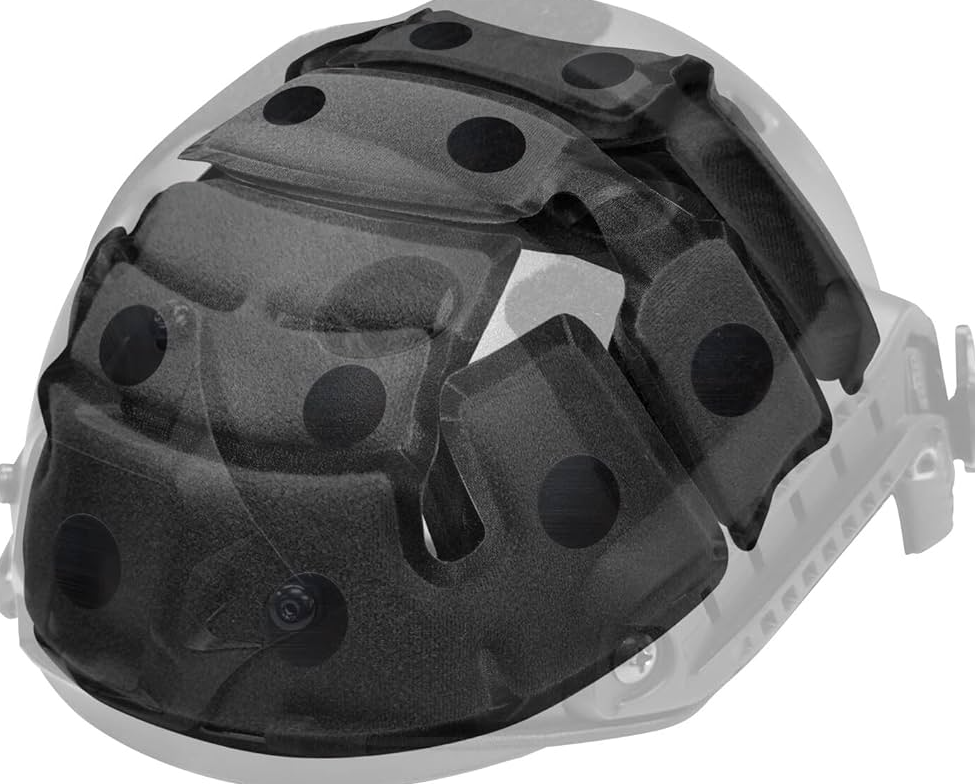
The padding and liner of a motorcycle helmet are crucial components that directly affect comfort, fit, and safety. These elements provide cushioning, support, and moisture-wicking properties to enhance the overall riding experience. Here's an expanded look at the padding and liner in motorcycle helmets:
Padding Material:
- Helmet padding is typically made from various materials, including foam, fabric, and synthetic materials designed for impact absorption and comfort.
- Foam layers, such as EPS (Expanded Polystyrene), are commonly used for their ability to absorb and disperse impact energy during a crash.
- High-quality padding materials are essential for providing adequate protection and reducing the risk of head injuries.
Moisture-Wicking Properties:
- The interior liner of a helmet often incorporates moisture-wicking properties to manage sweat and moisture effectively. This helps keep the rider's head dry and comfortable during rides.
- Moisture-wicking liners move sweat away from the skin to the outer layers of the padding, where it can evaporate. This feature is particularly important for preventing discomfort and fogging on the visor or face shield.
Anti-Microbial Treatment:
- Some helmet liners are treated with anti-microbial agents to prevent the growth of odor-causing bacteria and fungi. This feature helps maintain helmet freshness over time.
Removable and Washable Liners:
- Many modern helmets have removable interior liners and cheek pads that can be easily taken out for cleaning or replacement. This feature ensures that the helmet remains hygienic and fresh, especially after long rides or extended use.
Contoured Fit:
- The padding and liner of a helmet are contoured to match the shape of the rider's head. This contoured fit enhances comfort and ensures that the helmet stays securely in place during a crash.
- Cheek pads are designed to provide support and maintain stability, while the crown liner conforms to the shape of the rider's skull.
Comfort Padding:
- Interior padding is also responsible for cushioning pressure points and evenly distributing the helmet's weight on the head. Properly placed padding contributes to a comfortable fit, even during extended rides.
Ergonomic Design:
- Helmets are designed with ergonomic considerations to ensure that the padding and liner are positioned correctly to maximize comfort and safety. This design includes accommodating for eyeglass wearers and ensuring that seams and edges do not cause discomfort.
Customization Options:
- Some helmets offer customization options for the interior padding and liner, allowing riders to adjust the fit to their preferences. This may involve using different thicknesses of cheek pads or crown liners.
Emergency Release Systems:
- In some helmets, the padding and liner are designed with emergency release systems that enable quick and safe removal of the helmet by medical personnel in the event of an accident.
Noise Reduction:
- Padding and liner materials can contribute to noise reduction within the helmet by absorbing and dampening wind and road noise, resulting in a quieter and more comfortable ride.
Multiple-Density Padding:
- Some helmets incorporate padding with varying densities to provide optimal impact protection in different areas of the helmet.
Compatibility with Communication Systems:
- Helmets may have built-in pockets or channels to accommodate communication system speakers and microphones, enhancing rider comfort and convenience.
Choosing a helmet with high-quality padding and liner materials, along with a proper fit, is essential for comfort, safety, and overall riding enjoyment. Remember that a helmet should feel snug and secure without causing pressure points or discomfort, and it should provide a supportive, moisture-wicking interior for a pleasant riding experience.
Noise Reduction
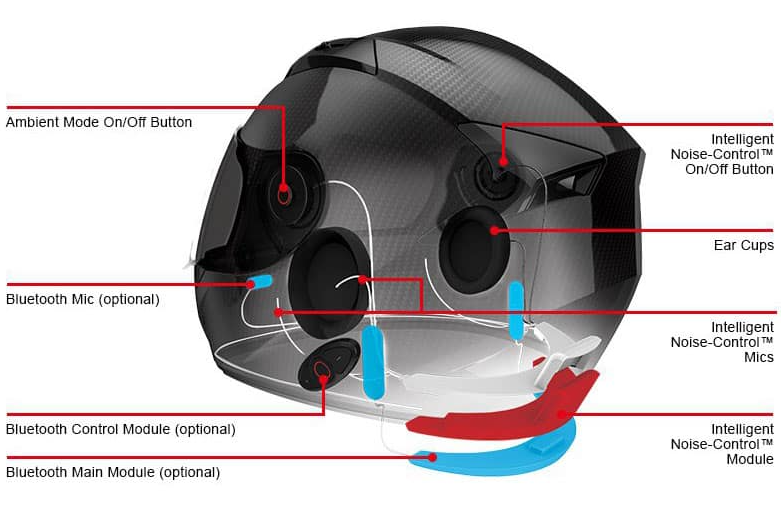
Noise reduction in a motorcycle helmet is an important factor for rider comfort and safety. Excessive noise can be fatiguing, distracting, and potentially damaging to the rider's hearing over time. Here's an expanded look at noise reduction in motorcycle helmets:
Helmet Design and Aerodynamics:
- The shape and design of a helmet can significantly impact noise levels. Well-designed helmets are aerodynamic and streamlined to reduce wind turbulence and associated noise.
- Helmet manufacturers often conduct wind tunnel testing and aerodynamic simulations to create helmets that minimize drag and noise while maintaining stability at high speeds.
Padding and Liner Materials:
- The materials used in the padding and liner of the helmet can contribute to noise reduction by absorbing and dampening wind and road noise.
- High-quality foam and padding materials are designed not only for impact protection and comfort but also for their noise-dampening properties.
Ventilation Design:
- Helmets with well-designed ventilation systems can help reduce noise by directing airflow in ways that minimize turbulence. Properly positioned vents can reduce wind noise entering the helmet.
- Some helmets have adjustable vents that allow riders to fine-tune ventilation for optimal noise reduction and comfort.
Seal and Fit:
- A well-fitting helmet creates a proper seal around the rider's head and reduces the amount of wind and noise that can enter the helmet. Helmets that fit snugly and securely tend to be quieter.
- Helmets with neck rolls or chin curtains can further improve the seal around the neck area, reducing wind noise.
Chin Curtain and Wind Deflector:
- Many helmets come with a chin curtain or wind deflector that can be attached to the bottom edge of the helmet. These devices help redirect wind away from the rider's face, reducing noise and turbulence.
- Wind deflectors are especially useful for open-face helmets and helmets with visors that may create gaps where wind noise can enter.
Earplugs:
- Riders can further reduce noise by wearing earplugs designed for motorcycling. These earplugs reduce wind noise while still allowing riders to hear important sounds like traffic and sirens.
- Earplugs designed for motorcycling are typically designed to reduce harmful noise levels while preserving situational awareness.
Helmet Visor/Shield Design:
- The design of the helmet's visor or face shield can affect noise levels. A well-sealed and properly adjusted visor helps reduce wind noise and turbulence.
- Some helmets have visors with multiple detents or positions, allowing riders to find the ideal position for noise reduction and visibility.
Soundproofing Materials:
- Some premium helmets feature soundproofing materials, such as acoustic foam or noise-reducing liners, to further reduce noise levels.
Riding Position:
- A rider's posture and riding position can also influence noise levels. Tucking in behind the windshield or fairings on certain types of motorcycles can reduce wind noise.
Regular Maintenance:
- Regularly inspect and maintain your helmet, ensuring that seals, padding, and visors are in good condition. Damaged components can contribute to increased noise levels.
Remember that while noise reduction is essential for comfort and safety, it's equally important to maintain situational awareness on the road. Some noise, such as the sounds of approaching vehicles, horns, and sirens, can provide critical information for your safety. Therefore, striking the right balance between noise reduction and situational awareness is key when choosing and using a motorcycle helmet.
Aerodynamics
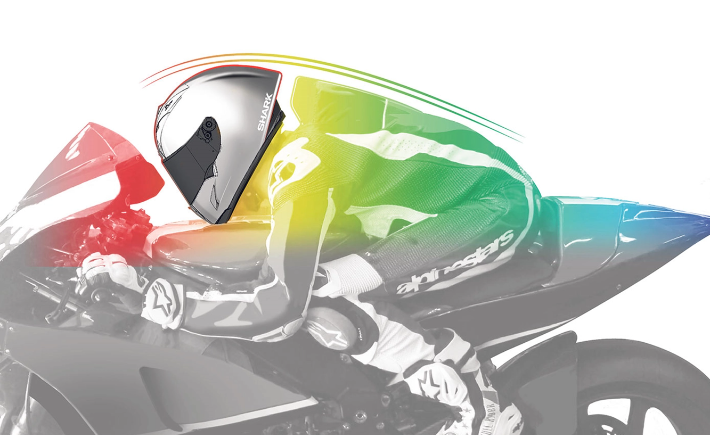
Aerodynamics plays a significant role in motorcycle helmet design, affecting rider comfort, stability, and safety. Understanding aerodynamics in the context of helmets can help riders select a design that suits their riding style and needs. Here's an expanded look at aerodynamics in motorcycle helmets:
Streamlined Design:
- Motorcycle helmet manufacturers invest in wind tunnel testing and computational fluid dynamics (CFD) simulations to create helmets with streamlined shapes that minimize drag and turbulence.
- A streamlined design reduces wind resistance, helping riders maintain stability, especially at high speeds. Less drag also contributes to improved fuel efficiency for riders on motorcycles.
Helmet Shape:
- The shape of the helmet plays a crucial role in its aerodynamics. Full-face helmets typically have a more aerodynamic profile compared to open-face or half-helmets.
- Helmets are designed to reduce lift and buffeting, which can cause rider fatigue and instability, especially when changing lanes or riding in crosswinds.
Shield and Visor Design:
- The visor or face shield on a helmet should be designed to minimize turbulence and airflow disruption. Well-designed visors fit flush with the helmet shell and have minimal gaps to reduce wind noise and pressure.
- Some helmets have adjustable visors or shields with multiple detents, allowing riders to fine-tune their riding experience by choosing the optimal visor position for aerodynamics and visibility.
Chin Spoilers and Wind Deflectors:
- Many helmets feature chin spoilers or wind deflectors positioned along the chin bar or under the visor. These components help direct airflow around the helmet and rider's face, reducing turbulence and noise.
- Chin spoilers also contribute to helmet stability by reducing lift.
Ventilation and Cooling:
- Helmet ventilation is a critical aspect of both comfort and aerodynamics. Effective ventilation systems minimize turbulence inside the helmet by directing airflow to exit vents, reducing wind resistance.
- Adjustable vents allow riders to control airflow and maintain an optimal balance between cooling and aerodynamics, especially during hot weather.
Rear Spoilers and Spoiler Shapes:
- Some helmets incorporate rear spoilers or winglets, often found on sportbike helmets. These spoilers are designed to create downforce, improving helmet stability at high speeds.
- Spoilers can also reduce lift and help maintain the rider's head in a more neutral position, reducing neck strain and fatigue.
Aerodynamic Testing:
- High-performance helmets designed for racing or high-speed riding often undergo extensive wind tunnel testing to fine-tune their aerodynamics. Riders who frequently travel at high speeds may benefit from helmets with a strong emphasis on aerodynamic design.
Helmet Stability:
- Proper aerodynamics contribute to helmet stability, which is essential for safety. A stable helmet reduces the risk of head movement during abrupt maneuvers or at high speeds, improving control and rider confidence.
Rider Position and Motorcycle Type:
- The rider's position on the motorcycle and the type of motorcycle being ridden can affect aerodynamics. Sportbike riders tend to adopt a more aggressive, tucked-in position to minimize wind resistance, while cruiser riders have a more upright posture.
- Helmet design should consider these factors, and riders should choose helmets that complement their riding style and posture.
In summary, aerodynamics in motorcycle helmets are crucial for rider comfort, stability, and safety. A well-designed helmet minimizes wind resistance, reduces turbulence, and contributes to overall rider control and confidence. When selecting a helmet, riders should consider their riding style, typical riding conditions, and the type of motorcycle they use to choose a helmet with suitable aerodynamic features.
Wrapping Things Up
In conclusion, selecting the best motorcycle helmet is a matter of paramount importance for every rider. Your choice should be driven by a combination of safety, comfort, and personal riding preferences. Ensuring that your helmet meets or exceeds safety standards like DOT, ECE, or SNELL is non-negotiable – your helmet is your primary protection on the road.
Moreover, consider the type of helmet that aligns with your riding style. Full-face helmets offer unparalleled protection, open-face helmets provide a sense of freedom, modular helmets offer versatility, and off-road helmets cater to adventure seekers. The helmet's fit, padding, and liner materials should offer a snug yet comfortable experience, while efficient ventilation keeps you cool and focused during your journeys.
As technology advances, so do helmet features. Some helmets are equipped with built-in communication systems, anti-fog shields, and advanced noise-reduction capabilities. Remember that what may be the best helmet for one rider might not be ideal for another – it's essential to align your helmet choice with your unique riding requirements.
In the end, the best motorcycle helmet is the one that combines safety, comfort, and functionality in a way that suits your needs and preferences. Whether you're a seasoned rider or a novice, invest in the helmet that makes you feel secure and confident on the road, ensuring that you can enjoy your rides to the fullest while staying protected.
